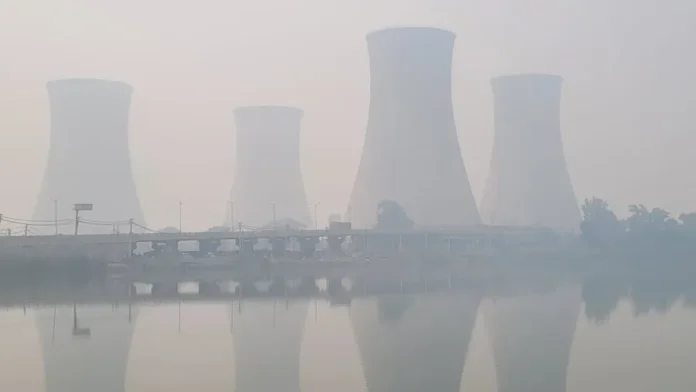Pakistan faces a range of environmental challenges, and among the most pressing is the persistent issue of smog. Particularly during the winter months, cities like Lahore, Faisalabad, and Karachi experience dangerously high levels of air pollution, engulfing urban centers in thick, choking smog. This phenomenon poses severe health risks, disrupts daily life, and highlights the urgent need for systemic change.
What is Smog?
Smog, a combination of “smoke” and “fog,” is a type of air pollution caused by a mixture of industrial emissions, vehicle exhaust, and natural atmospheric conditions. In Pakistan, smog is exacerbated by factors such as crop burning, coal-fired power plants, and urbanization.
Causes of Smog in Pakistan
- Vehicular Emissions
The rapid increase in the number of vehicles, many of which lack proper emissions controls, contributes significantly to air pollution. Old and poorly maintained vehicles release harmful pollutants, including nitrogen oxides and carbon monoxide. - Industrial Pollution
Factories in and around urban areas release large amounts of toxic gases and particulate matter into the air, often without adhering to environmental regulations. - Crop Residue Burning
Farmers in Punjab and Sindh frequently burn crop stubble to prepare fields for the next planting season. This practice produces dense smoke that adds to the smog, especially when weather conditions trap pollutants close to the ground. - Urbanization and Construction Dust
Unchecked urban development and construction activities release fine particulate matter (PM2.5), a key component of smog. - Seasonal Factors
During winter, temperature inversions trap pollutants in the lower atmosphere, making smog more prevalent and long-lasting.
Impacts of Smog in Pakistan
- Health Risks
- Respiratory Illnesses: Increased cases of asthma, bronchitis, and lung infections.
- Cardiovascular Issues: Higher risks of heart attacks and strokes due to prolonged exposure to PM2.5.
- Eye Irritation: Many individuals experience burning and watering of the eyes during smoggy days.
- Economic Costs
- Healthcare Burden: A rise in medical expenses due to smog-related illnesses.
- Reduced Productivity: Smog forces people to limit outdoor activities, affecting businesses and daily routines.
- Environmental Damage
Smog not only harms human health but also affects ecosystems, reducing agricultural productivity and damaging vegetation. - Transportation Disruptions
Visibility during heavy smog is drastically reduced, leading to traffic accidents and delays in air travel.
Solutions to Combat Smog
- Promote Cleaner Energy Sources
Transitioning to renewable energy, such as solar and wind power, can significantly reduce reliance on fossil fuels. - Improve Public Transportation
Expanding and upgrading public transit systems can reduce the number of private vehicles on the roads, curbing emissions. - Enforce Environmental Regulations
Strict monitoring of industrial emissions and penalizing violators is essential for long-term improvement. - Adopt Sustainable Agricultural Practices
Providing farmers with alternatives to crop burning, such as using machinery for stubble removal, can mitigate smog. - Raise Public Awareness
Educating citizens about the health impacts of smog and the importance of reducing individual contributions to air pollution can lead to community-driven solutions. - Plant More Trees
Urban afforestation can help absorb pollutants and improve air quality over time. - Smog in Pakistan is not merely an environmental issue; it is a public health emergency that demands immediate attention. The responsibility lies with both the government and citizens to take proactive measures to reduce pollution and protect the environment. By addressing the root causes and implementing sustainable solutions, Pakistan can pave the way for cleaner air and a healthier future for its people.
How can we as individuals contribute to reducing smog in our cities? Share your thoughts in the comments below!


